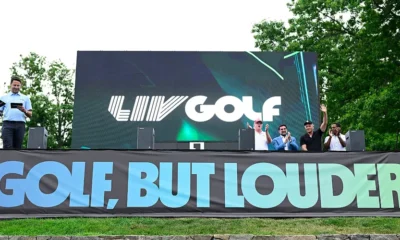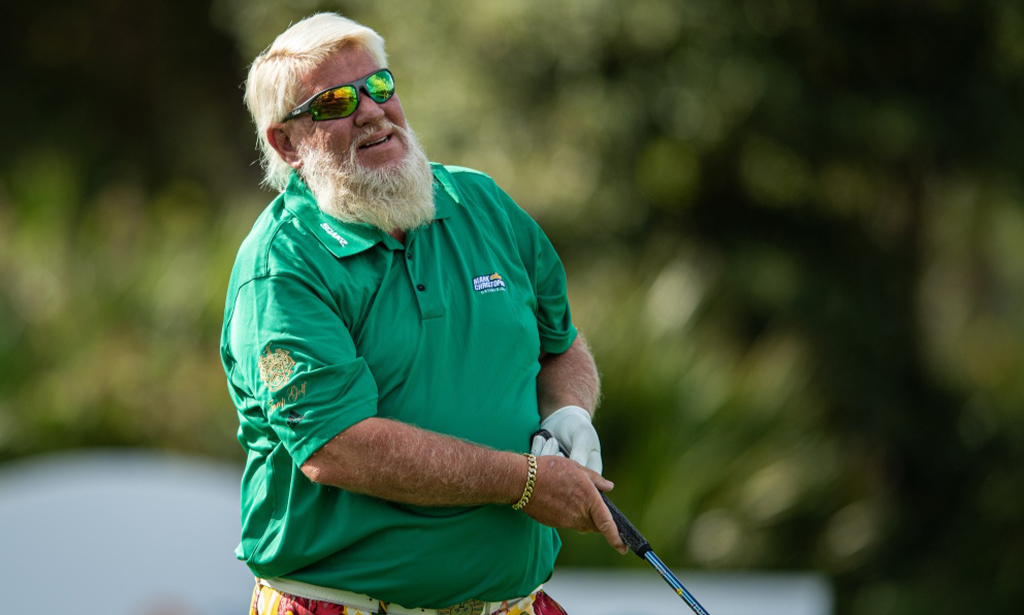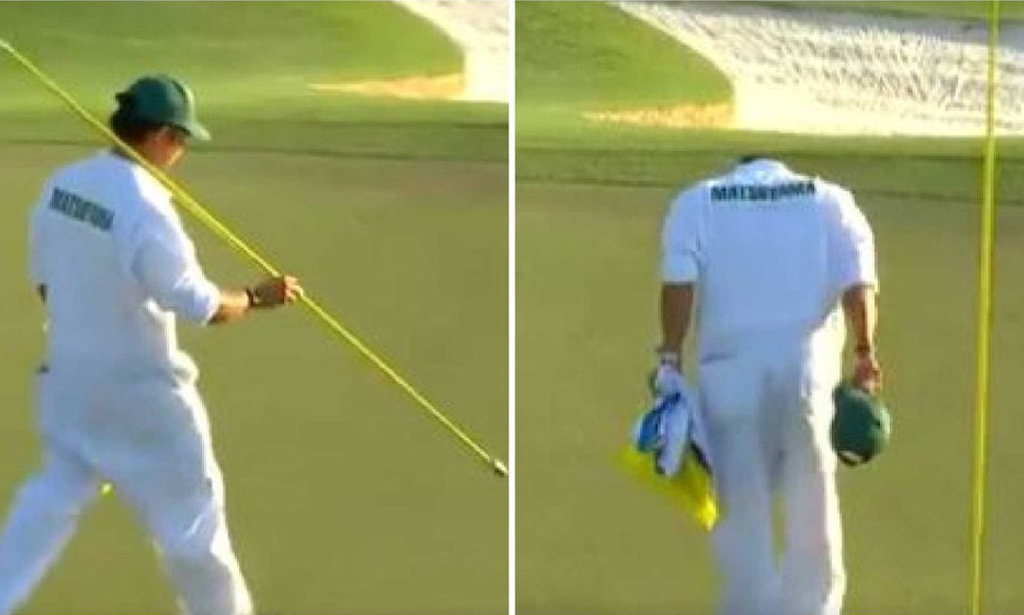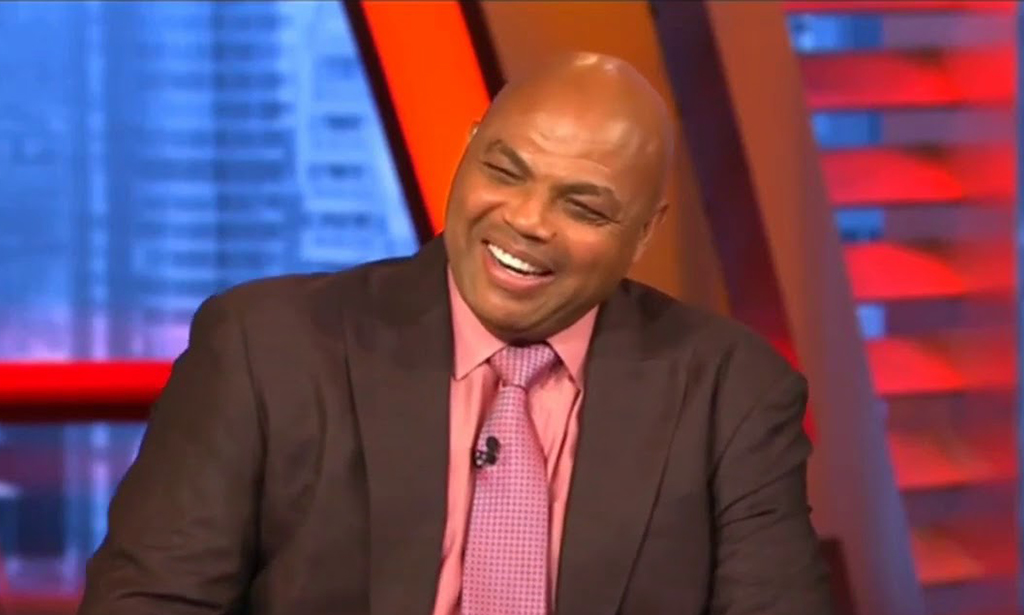Blog
Golf Introduces New “Bryson” Rule to Limit Driver Length
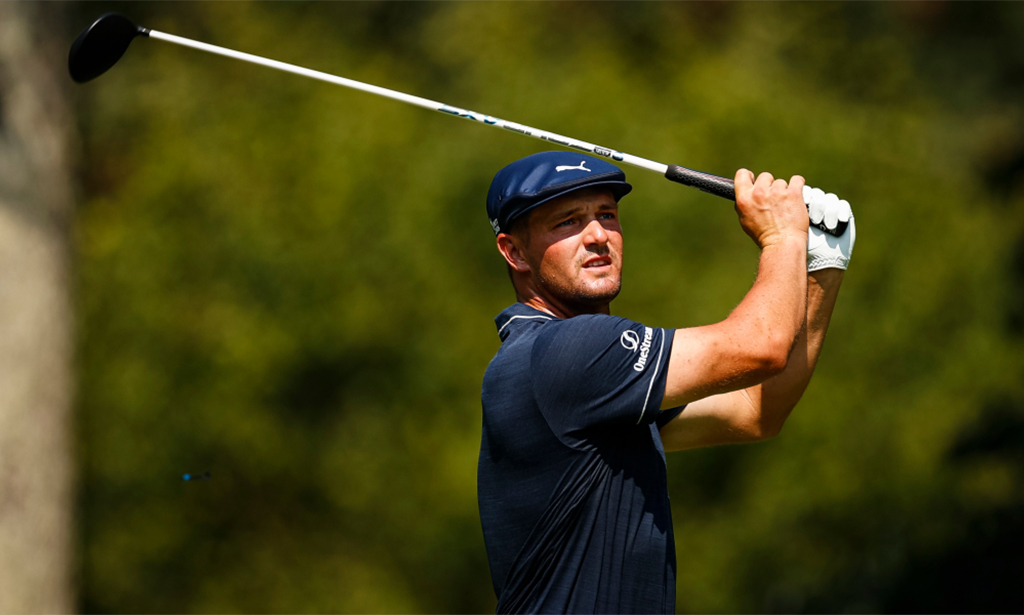
Around this time last year, the world was different. We were amidst a global pandemic, parents were thrust into the job of teachers as schools were, for the most part still solely online learning, and oh yeah…48-inch drivers were one of the hottest topics in the golf equipment world. That was mostly thanks to Bryson DeChambeau’s announcement that he’d be testing longer drivers following his 2020 U.S. Open win.
Mind you, DeChambeau had just lapped the field at Winged Foot, quite literally one of the most difficult U.S. Open venues statistically. Then he does what? He starts talking about his plan to test out even longer drivers to push his distance limits. This clearly got the golf worlds attention. Fast forward 12 months…
You could almost hear the thoughts swirling in the heads of his competitors heads: If Bryson gets even longer, I’m gonna be forced to keep up. Shoot, I can’t keep up now. I must be better! Others were likely more skeptical of longer drivers and wanted nothing to do with it.
All that said, either way, DeChambeau did bring up a viable point. Why not experiment with longer driver builds to see if there’s significantly more distance to be had?
In the wake of DeChambeau’s declaration, some tour players ordered 47- and 48-inch drivers from their PGA Tour equipment reps to try out. “If he is gonna do it, why cant I? Afterall, he is the mad scientist of golf” As onlookers, and experimenters ourselves, we speculated: Will 48-inch drivers REALLY become the new norm? Will so many players switch into longer drivers that 8,000 yard golf courses will become the new norm?
I suppose, if you really wanted to, you could argue that distance was already an issue on the PGA Tour. Hell, even without longer drivers being thrown into the equation. The USGA has certainly been researching the distance debate for itself.
In the last year, though, 48-inch drivers haven’t quite taken over professional golf like some thought they might. Sure, Viktor Hovland has experimented with the concept. And yeah, Phil Mickelson won the 2021 PGA Championship with a driver measuring 47.9 inches (Bet you didn’t know that gem).
But as the PGA Tour discovered in its recent research on the matter of driver length, it really only impacts a very small segment of tour golfers. The numbers you ask, well I am glad you did. A mere 3 percent of professional players use clubs longer than 46 inches. That’s not exactly the takeover that us equipment insiders were anticipating. Surely golf wouldn’t make a rule that affects 3 out of 100 golfers and makes the game less fun? Right?
Regardless, on Tuesday, the USGA and R&A announced a new local rule option to limit driver length to 46 inches. That’s right, its an option. So, week in and week out the rules governing this will change based on who is hosting the event. 1 week it’s OK, but the next may be… “nah, sorry man – it’s a hard no for us”. It’s kind of like reservation gambling at the native American casinos. Its illegal over here, 1 mile away, BUT over here, 1 mile east, you are playing blackjack and penny slots to your hearts content and it’s all good. Something seems off to me on this one…
“Admittedly, this is not the ‘answer’ to the overall distance debate/issue, but rather a simple option for competitive events,” Mike Whan, the USGA’s chief executive officer, said in a statement. “It’s important to note that is not a ‘Rule of Golf,’ and as such, it is not mandated for the average, recreational golfer. Rather, this is an available tool for those running competitive events.”
In a statement, the PGA Tour then announced that it would implement the local rule for its competitions starting on Jan.1, 2022.
“After understanding the feedback received from the golf manufacturing community, we also undertook a survey of usage of clubs in use across the PGA Tour, PGA Tour Champions and the Korn Ferry Tour and found that a very small number of players either have used or are currently using clubs greater than 46 inches,” the statement read. “The PGA Tour Player Advisory Council recently reviewed the subject and we have concluded that the PGA Tour will implement the Local Rule on Jan. 1, 2022.”
We already know Mickelson’s stance on the subject, as you can watch in the embedded Tweets below. Spoiler alert, He don’t like it!
That got us thinking…What do other PGA Tour players think about the ban of drivers longer than 46 inches? Here’s what a collection of PGA Tour pros had to say at the 2021 CJ Cup following the news.
Justin Thomas
“Yeah, I don’t really agree with it,” Thomas told the press on Tuesday at the 2021 CJ Cup. “I think it’s — I don’t know. I feel like there’s a lot of other things, you know, like the arm-bar putter, that they should be approaching as opposed to the length of driver. I think the fact that you see only a few people using a long driver speaks for itself, that it’s not really that big of an advantage. It’s a lot harder to hit it straight.
“In terms of do I think it makes the game of golf and growing the game better? No, I don’t at all, but they seem to have their kind of mind around that for a while now, so it seems to be the issue because if there’s an amateur golfer or players at home that want to hit it a little bit farther, so be it. Or if there’s guys out here that want to have a chance to put it in play with a 47-, 48-inch driver, then power to them. I had that opportunity; I just chose not to. I don’t necessarily agree with it, but it is what it is.”
Kevin Kisner
“I don’t know what they’re trying to accomplish other than to keep people from hitting it far,” Kisner told GOLF.com. “I mean, the game’s moving in that direction. I think they’re just trying to figure out a way to keep it in some sort of a realm. But anything that makes the game harder I’m against. So, if it makes it harder, I don’t wanna do it. The game’s hard enough, man.
Dustin Johnson
“My opinion is more, I don’t think it matters what length someone uses, because the longer the driver gets the harder it is to hit straight,” Johnson told GOLF.com. “So, if you could hit a 48-inch driver and keep it on the planet, then more power to you. I’ve tested with ‘em, and yeah it goes further, but it also goes a lot more crooked. You lose a lot of control, so for me, I don’t think it’s necessary.”
Adam Scott
“My initial reaction is that I don’t think it’ll make any difference,” Scott told GOLF.com. “The only thing I can say is maybe for the future if everyone started using 47- and 48-inch drivers and they all started to go down that route, but for now I don’t see it making any real difference. I don’t know how many guys were using 47-inch drivers.”
Collin Morikawa
“Look, it’s not going to change my driver specs, I’ll tell you that, and I don’t think it’s going to change many other guys’ driver specs,” Morikawa told the press on Tuesday. “Is that the answer to hitting it shorter? No. You know, I think yeah, if you have a long driver and you see what Bryson did, you see what long drive guys do, they have a longer driver, right, and they’re able to hit it farther, but can you maintain that on the golf course? Hasn’t been done yet. Not saying it won’t be done, but you know like if a guy wants a 47-inch driver, I think they should let them, because why not?
“We’ve seen courses that you end up shooting 10-to-15 under, and it’s not because the course is 9,000 yards long. We don’t play that. It’s because it makes you shape shots; it makes you hit different shots and it’s all about course design. So that’s my opinion in it or on it, is that I think course design needs to be structured in a way where we don’t need 8,000-yard courses. Yeah, they’re great sometimes, but there’s a lot of short courses on our tour that don’t provide 25 under par and it’s because of the way the layout is and the conditions. So, I don’t think many guys have over 46 inches, their driver, anyways, so I don’t think it will change much.”
Hudson Swafford
“I mean I can’t hit a 48-inch driver, so, it doesn’t really bother me,” Swafford told GOLF.com. “I hit a 45-inch driver; pretty standard, actually a little shorter. So, it doesn’t really bother me. It is what it is. I don’t really care. But it’s interesting; people are trying it and picking up a lot of speed. I picked up like a 46-inch and picked up speed, but I can’t hit it straight. So, it didn’t do me any good.”
Stewart Cink
“I think it’s going to have zero impact on golf, because I don’t know if I’ve ever known a golfer to use a driver longer than that in competition out here,” Cink told GOLF.com. “I don’t think it’s going to be a huge impact. To me it seems like there’s other areas, if they want to address distance, the length of the shaft is probably not the main thing, it’s probably just to safest one from a legal standpoint.”
This article originally appeared on Golf.com
Blog
The Unofficial Rules of Golf: A Gentleman’s Guide to Not Being Judge Smails
The official rulebook is thicker than a dictionary and twice as boring. Let’s talk about the rules that really matter on the course: how to have fun, respect the game, and not be a stick-in-the-mud. Hint: It involves less plaid and more cosmic harmony.
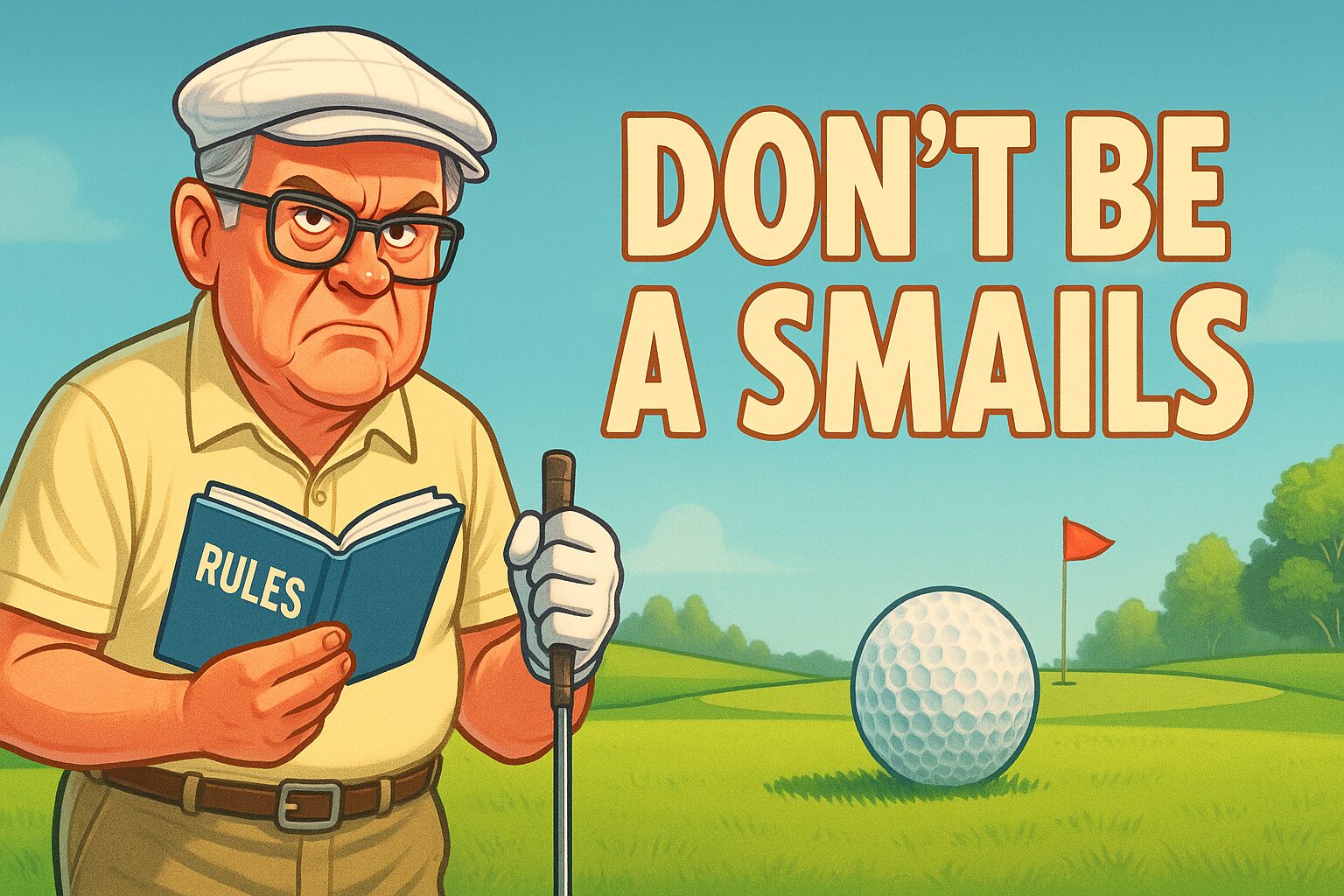
You’ve seen him. I’ve seen him. The guy who quotes the USGA rulebook like it’s scripture. He’ll happily tell you your ball moved a quarter of an inch when you addressed it, costing you a penalty stroke. He’s got a plumb bob for a three-foot putt and the personality of a rake. He is, in spirit, Judge Smails. And let’s be honest, nobody wants to be Judge Smails.
The real game of golf, the one that keeps us coming back, isn’t played by those rules. It’s played by a higher law. An unwritten code of conduct that’s all about flow, friendship, and the pursuit of that one perfect shot. It’s a gentleman’s agreement with the universe.
So, let’s talk about the rules that actually matter.
1. The Cosmic Readjustment (aka The Mulligan). Your first tee shot is a mess. It goes sideways into the woods where the gophers play. The Smails of the world would tell you to take a penalty and hack it out. I say the universe is just getting warmed up. The “breakfast ball” isn’t cheating; it’s a course correction. It’s an agreement among friends that a round of golf shouldn’t be ruined before it even begins. Take another. The Dalai Lama would want you to.
2. The Art of Flow (aka Pace of Play). This isn’t about rushing. Rushing is a fool’s game. This is about flow. It’s about being ready to hit when it’s your turn. It’s about watching your friend’s shot so you can help them find it. It’s about moving with a purpose, not like you’re searching for your car keys in a dark parking lot. Don’t be the anchor that drags the whole group down. See the line, hit the ball, walk on. Nanananana.
3. The Circle of Friendship (aka Gimmes). Is the putt inside the leather? Good enough. Pick it up. Life is too short to watch your buddies sweat over an 18-inch putt for a double bogey. A gimme isn’t just a time-saver; it’s a gesture of goodwill. It says, “I trust you, you trust me, and neither of us needs the anxiety of missing this tiny putt.” It’s good for the karma, and even better for the pace of play.
4. The Final Verdict (aka The 19th Hole). The most important rule is this: no matter what happened out there, you shake hands on the 18th green and settle things over a cold drink at the 19th. The guy who shot an 82 and the guy who shot a 102 are equals in the clubhouse. The stories get better, the putts get longer, and the bad shots fade away. This is where the real game is won.
So, forget about the fine print. Focus on the feeling. Be a good playing partner, enjoy the walk, and don’t be a Smails. You’ll find your score starts to take care of itself.
Did this speak to your soul? Pass it along to your foursome to make sure everyone is on the same page. For more deep thoughts from the fairway, be sure to follow us on social media. It’s the right thing to do.
Blog
When Golf Gadgets Fail: Navigating Common Tech Mishaps on the Golf Course
A Look at What Happens When Modern Golf Gadgets Go Wrong

Imagine this: you’re on the golf course, teeing off on a beautiful, sunny day. With the help of your trusty golf gadget, you’re confident you’ll hit a birdie or even an eagle. But just when you’re about to swing, your gadget malfunctions. Suddenly, your perfect game is thrown into chaos. Welcome to the world of technology fails, where even the most advanced golf devices can sometimes let you down. In this article, we’ll explore some common tech fails and provide some tips on how to handle them.
When Golf Gadgets Let You Down
Modern golf devices, from smart clubs to digital scorecards to GPS-enabled watches, have revolutionized the game. They provide golfers with real-time data, helping them refine their swing, choose the right club, and navigate the course. But what happens when these devices fail?
Unreliable Data
One of the most common golf gadget fails is inaccurate or unreliable data. GPS devices might show the wrong distance to the pin, swing analyzers might give incorrect feedback, and digital scorecards might miscalculate your score. This can be frustrating, especially when you’re relying on these devices to improve your game.
Battery Drain
Another common issue is battery drain. Many golf gadgets require a significant amount of power, and if they’re not properly charged, they can die in the middle of a game. This leaves you without the data you need to make informed decisions on the course.
Technical Glitches and Malfunctions
Sometimes, golf devices just stop working. They might freeze, crash, or refuse to turn on. These technical glitches can be caused by software bugs, hardware issues, or even user error.
Preventing Golf Gadget Fails
While it’s impossible to prevent all golf gadget fails, there are steps you can take to minimize the risk.
Regular Updates
Keeping your devices updated can help prevent software-related issues. Regular updates often include bug fixes and improvements that can enhance the performance of your device.
Proper Charging
To avoid battery-related problems, make sure to fully charge your devices before hitting the course. Some devices also have power-saving modes that can help extend battery life.
Backup Plan
It’s always a good idea to have a backup plan in case your devices fail. This might mean carrying a traditional scorecard or having a basic understanding of how to calculate distances without a GPS.
When Gadgets Go Wrong: The Bottom Line
Golf gadgets are a fantastic tool for any golfer looking to improve their game. However, like all technology, they can sometimes fail. By understanding the common issues and how to prevent them, you can ensure you’re prepared for any tech-related hiccups on the course. After all, golf is about more than just the gadgets—it’s about the experience, the skill, and the love of the game.
Blog
Mastering the Art of Overcoming Choking under Pressure: Strategies for Peak Performance
Learn the skills needed to stay calm under pressure.

Imagine this: you’ve spent countless hours honing your skills, preparing for that big presentation, important meeting, or decisive sports match. But, when the big moment arrives, instead of performing at your best, your mind goes blank, your hands shake, and you flub it. The dreaded phenomenon of ‘choking under pressure’ can strike anyone, from the seasoned professional to the eager amateur. So, how do you overcome this common mental roadblock? In this article, we’ll explore effective strategies to help you conquer the fear of choking and elevate your performance under pressure.
Understanding Choking under Pressure
Before you can overcome choking, it’s crucial to understand what it is. Psychologists define choking as performing below your ability under pressure. This can be due to heightened anxiety, overthinking, or fear of failure. The irony is, the more you care about performing well, the more likely you are to choke.
Why Do We Choke?
Several factors contribute to choking under pressure. Here are a few:
-
- Fear of Negative Evaluation: The fear of being judged negatively by others can cause significant anxiety, leading to poor performance.
- High Stakes: When the stakes are high, and the outcome is important, the pressure can cause you to underperform.
- Overthinking: The tendency to scrutinize every detail in high-pressure situations can divert your focus from the task at hand.
Strategies to Overcome Choking
Now that we understand why we choke, let’s delve into strategies to prevent it:
- Practice Under Pressure: Simulate high-pressure situations during practice to acclimate yourself to the stress.
- Focus on the Process, Not the Outcome: Concentrating on the process helps keep your mind focused and prevents overthinking.
- Use Positive Affirmations: Positive self-talk can boost your confidence and reduce anxiety.
Case Studies: Athletes Overcoming Choking
Many successful athletes have overcome choking to deliver exceptional performances. Take Michael Jordan, for example. He often missed crucial shots early in his career but used these failures to fuel his determination and eventually became renowned for his clutch performances. Similarly, Serena Williams has bounced back from choking in several matches to claim victory, demonstrating her mental toughness.
Choking under pressure is a common phenomenon, but with the right strategies, it can be overcome. By understanding the causes of choking and implementing techniques like practicing under pressure, focusing on the process, and using positive affirmations, you can learn to perform at your best when it counts the most. Remember, it’s not about never feeling pressure; it’s about learning how to thrive within it.
As Michael Jordan said, “I’ve missed more than 9,000 shots in my career. I’ve lost almost 300 games. 26 times, I’ve been trusted to take the game-winning shot and missed. I’ve failed over and over and over again in my life. And that is why I succeed.” So, next time you face a high-pressure situation, think of it as an opportunity to grow, not a threat to be feared.
If you’ve enjoyed this article and want to learn more about mastering your mental game, subscribe to our newsletter for more tips and strategies. Or, if you’re ready to take your mental toughness to the next level, check out our other articles designed to help you conquer pressure and perform at your peak.
-

 Product Review6 years ago
Product Review6 years agoThe Perfect Practice Putting Mat Review by Jason Tenzer
-

 Blog4 years ago
Blog4 years agoLoophole Rule Offers PGA Tour Pros a Mulligan
-

 Blog4 years ago
Blog4 years ago2021 Buyer’s Guide: The Top 10 Value Golf Balls For Distance & Feel
-

 Blog5 years ago
Blog5 years agoGolf Marriage Counselor
-

 Blog6 years ago
Blog6 years ago9 Biggest Chokes Of The Past Decade
-

 Product Review6 years ago
Product Review6 years agoTHE ADJUSTABLE IRONS: WALKING STICKS GOLF CLUBS
-

 Blog4 years ago
Blog4 years agoWhat Your Golf Clubs Say About You
-

 Equipment6 years ago
Equipment6 years agoOHK Sports Interview by Jason Tenzer




